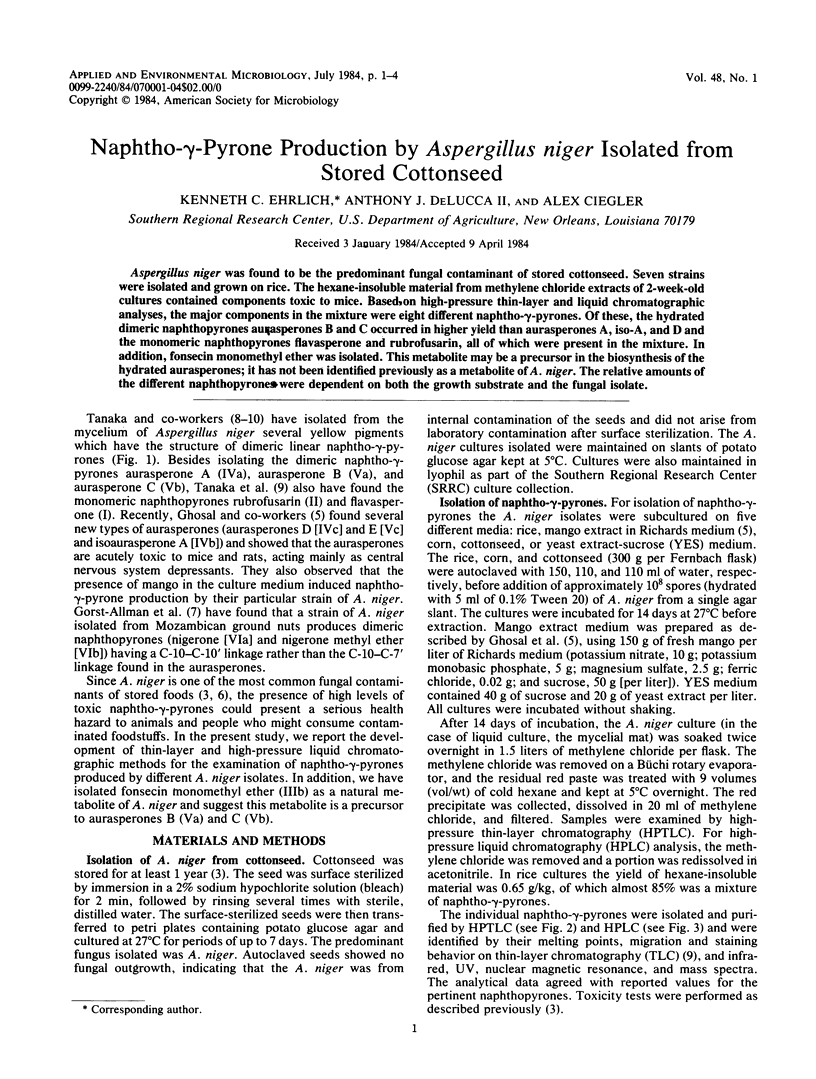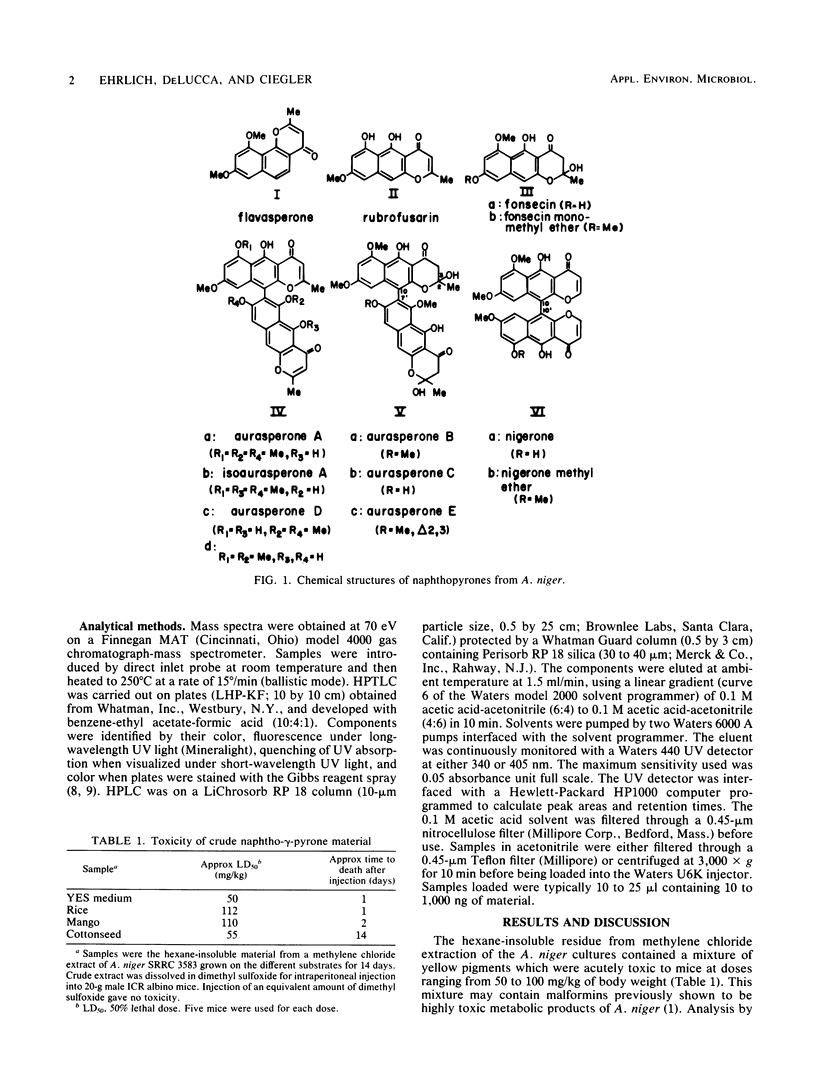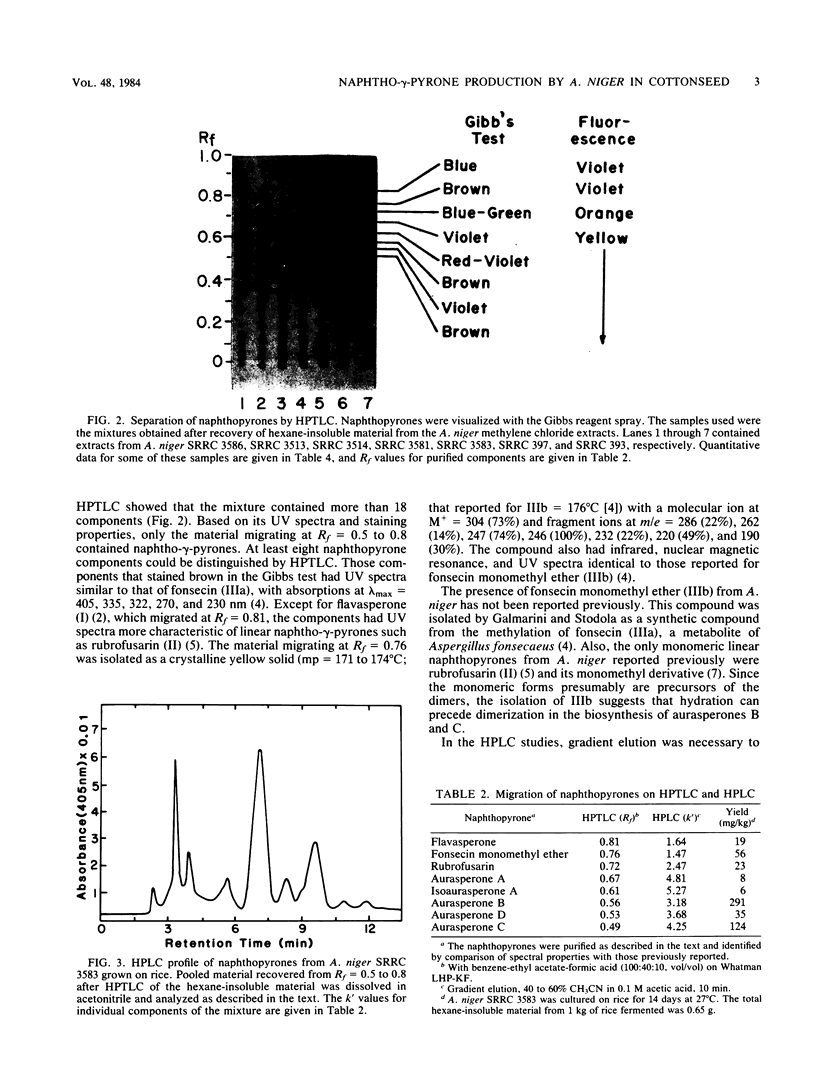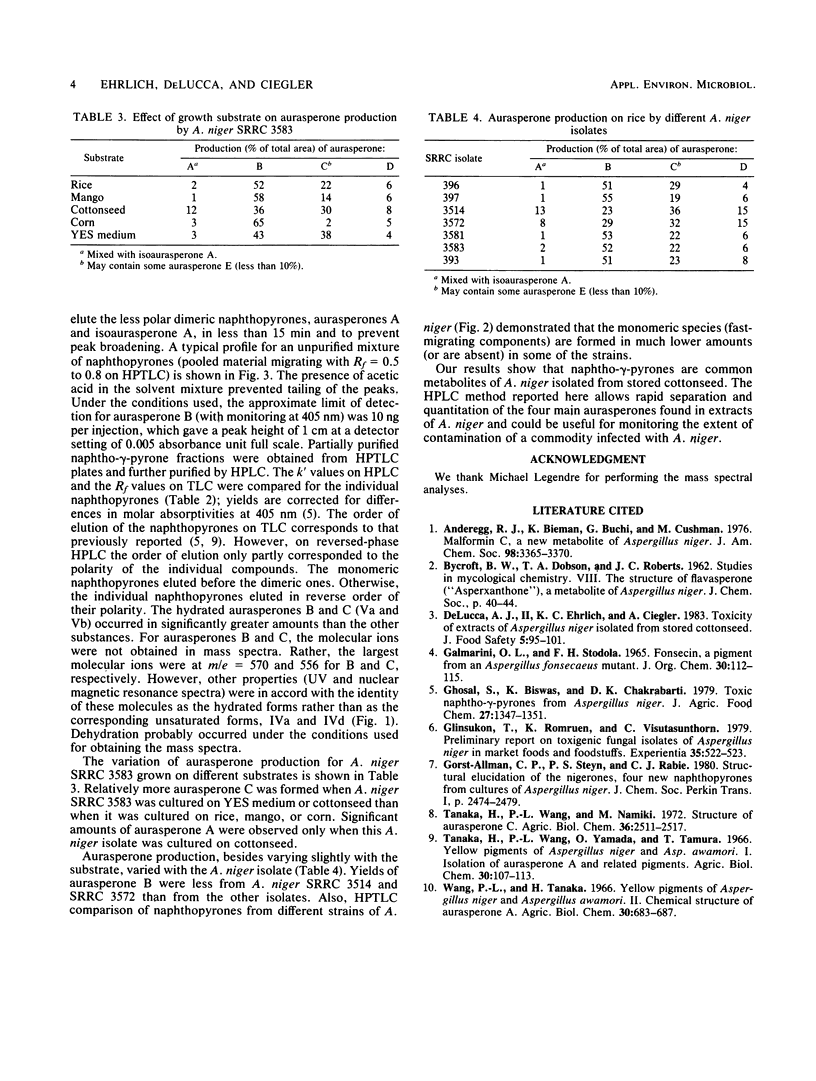Abstract
Aspergillus niger was found to be the predominant fungal contaminant of stored cottonseed. Seven strains were isolated and grown on rice. The hexane-insoluble material from methylene chloride extracts of 2-week-old cultures contained components toxic to mice. Based on high-pressure thin-layer and liquid chromatographic analyses, the major components in the mixture were eight different naphtho-gamma-pyrones. Of these, the hydrated dimeric naphthopyrones aurasperones B and C occurred in higher yield than aurasperones A, iso-A, and D and the monomeric naphthopyrones flavasperone and rubrofusarin, all of which were present in the mixture. In addition, fonsecin monomethyl ether was isolated. This metabolite may be a precursor in the biosynthesis of the hydrated aurasperones; it has not been identified previously as a metabolite of A. niger. The relative amounts of the different naphthopyrones were dependent on both the growth substrate and the fungal isolate.
Full text
PDF



Images in this article
Selected References
These references are in PubMed. This may not be the complete list of references from this article.
- Anderegg R. J., Biemann K., Büchi G., Cushman M. Malformin C, a new metabolite of Aspergillus niger. J Am Chem Soc. 1976 May 26;98(11):3365–3370. doi: 10.1021/ja00427a051. [DOI] [PubMed] [Google Scholar]
- Ghosal S., Biswas K., Chakrabarti D. K. Toxic naphtho-gamma-pyrones from Aspergillus niger. J Agric Food Chem. 1979 Nov-Dec;27(6):1347–1351. doi: 10.1021/jf60226a018. [DOI] [PubMed] [Google Scholar]
- Glinsukon T., Romruen K., Visutasunthorn C. Preliminary report on toxigenic fungal isolates of Aspergillus niger in market foods and foodstuffs. Experientia. 1979 Apr 15;35(4):522–523. doi: 10.1007/BF01922746. [DOI] [PubMed] [Google Scholar]



